Some people say the E-Type Jag lost something when the sweet-singing inline 3.8 liter (later 4.2 liter) in-line six was replaced (in 1971) with a more relaxed-fit 5.3 liter V-12 . . . and power steering was made standard. The car was somehow more like once-a-month Saturday afternoon sex with your wife of 20 years. Still fun, sure. But not quite the same as it was that first year, before the kids came along … .
These thoughts came to mind as I pondered what to write about the 2014 VW CC. When it was introduced back in ’08 as a new 2009 model, it was uber sexy for a four-door. No sedan had slinky lines like this. Certainly not a mass-produced, relatively affordable sedan.
As in the early Series I E-Type, practicality took a back seat. Literally. There was only room for two in the back – not the usual three. It was an intimate car – for people not yet overly worried about room for the kids or how big the trunk was.
Everyone agreed the CC was a hot-looker.
Unfortunately for VW, it wasn’t a hot-seller.
But rather than give up on the car, VW has given it a make-over in the hopes of a do-over.
It now has a more conventional three-across back seat – and room for five rather than four. The CC’s front and rear clips are new, too – and styled more in line with the Passat (wider, egg-crate style grille, etc.)
The mechanicals, however, remain the same – and that was probably a mistake. If VW had put its excellent TDI diesel (available in the Passat and Jetta) into this still-beautiful car, it would also be an extremely practical car. In the Passat, the TDI engine rates 31 city, 43 highway. Imagine a car that looked like the CC that delivered that kind of economy (and performance, too – the TDI is a torque-rich, spin-the-tires and snap-your-neck-back-if-you-want-to kind of engine). Now imagine it with a sticker price around $36k – which would probably be in the ballpark.
There wouldn’t be anything like it on the road – not for the money or otherwise.
But, alas.
As it is, the ’14 CC is more everyday-viable than the old four-seater – and it still a whole lot more interesting to look at (and to drive) than a Camry or Accord.
Whether that’s enough to keep the CC from going the way of the ill-starred Phaeton, however, remains to be seen.
The CC – VW’s acronym for Comfort Coupe – is a mid-sized sedan with entry-luxury aspirations and dramatic coupe-like styling elements, including a “fast” windshield and low-cut roofline. The original (2009-2012) model also differed from other sedans in having a more intimate two up front, two in back seating layout rather than the usual two up front and three-across in the back.
Buyers shopping a Passat (or similar mid-sized, mid-priced car) looking for more personal style and exclusivity – at the cost of some interior/trunk space – might find the CC an appealing alternative to the look-alike specials out there.
Ditto buyers considering something officially entry-luxury like the slightly smaller – and four cylinder-only – Audi A4.
The CC also presents buyers with the opportunity to own a car that’s as uncommon – and eye-catchingly dramatic – as the $72,000 to start Benz CLS sedan.
But at a loaded Passat price point.
The base Sport model is FWD only – and comes standard with a turbocharged, 2.0 liter four cylinder engine and six-speed manual transmission (VW’s DSG automated manual six-speed transmission is available optionally). Base price is $31,795 with the manual, $32,470 with the DSG automatic.
The VR6 version of the CC comes with a more powerful 3.6 liter V-6 engine and the option to buy VW’s 4-Motion AWD system.
Base price for the front-wheel–drive V-6 CC Lux is $38,935. A top-of-the-line Executive trim with the V-6 and 4-Motion AWD stickers for $42,260.
In between is a new R-Line trim (2.0 liter engine only) which comes with unique 18-inch wheels, LED headlights and other styling enhancements.
Prices for this version of the CC start at $33,020.
WHAT’S NEW
VW has updated the exterior styling of the 2013 CC – and more significantly, changed the interior layout from the former four-seater configuration to a more conventional five-passenger set-up. The second row middle seat’s not much of a seat – but it is technically a seat. And the CC now at least technically (if not all that comfortably) seats five.
Bi-Xenon HID headlights and LED tail-lights are standard on all trims now.
WHAT’S GOOD
High-line looks, features and amenities – VW price tag – If you’re prudent with the options.
Standard 2.0 turbo engine is power/performance competitive with base-engined (and higher-priced) entry luxury sedans – and you can get it with a manual transmission (rare in bread and butter mid-sized sedans).
Available massaging seats.
WHAT’S NOT SO GOOD
VR6 version is a tad on the slow-pokey side, especially with AWD.
No manual transmission available with V-6.
No diesel engine available, period.
If you’re not careful with the options, you can easily pay Audi money for your VW.
The CC’s skin and interior are refreshed but the engine lineup it had back in 2009 when it was first introduced carries over.
Standard equipment is a 2.0 liter, 200 hp four, paired up with either a six-speed manual or DSG (direct shift gearbox) automated manual.
All 2.0-equipped CCs are front-wheel-drive.
With the 2.0 engine, the CC gets 60 in about 7.3-7.4 seconds (depending on which transmission you choose; the six-speed manual version is slightly quicker in the hands of a driver who knows his clutchwork). Though the entry-luxury mid-size cars the CC overlaps on the right hand side of the price scale typically offer a bit more power/performance (a BMW 3, as an example has a 240 hp turbo 2.0 and gets to 60 in the mid-60s) the CC offers significantly more engine than the bread-and-butter mid-sized sedans it overlaps on the left-hand side of the price scale. Cars like the Honda Accord, Toyota Camry – and even VW’s own Passat. They all come with non-turbo fours with less than 200 hp as standard equipment – and typically get to 60 about a second later. It’s also fairly hard to find a manual transmission in bread-and-butter mid-sized sedans. A few (Accord, Mazda6) do offer them. But most don’t – and those that do offer a manual usually only offer it with the low-performance base engine, not their more powerful optional engines.
For more CC scoot, there’s the optional 3.6 liter engine, producing 280 hp.This engine is sold only with the DSG six-speed automatic, but you can go with FWD or VW’s 4-Motion AWD system. With 4-Motion (which adds weight and rolling resistance) the 0-60 time is about 6.8 seconds. With FWD, it’s a bit lighter – and a bit quicker.
Either way, the V-6 CC is not as quick as entry-luxury cars fitted with their optional sixxes. However, the V-6 CC is still competitive with V-6 equipped mid-sized sedans like the 2014 Camry I reviewed last week (see here) and unlike virtually all its bread and butter mid-sized, bread-and-butter priced competition, it offers AWD. 
The chief flaw of both the CC’s engines, in my opinion, is their gas mileage. The four is ok: 21 city, 32 highway. The V-6 is ok, too – at least if you don’t order AWD – in which case you’re looking at 17 city, 27 highway.
With AWD, the figures dip to 17 city, 25 highway.
But you know what would be better than merely ok? The 31 city, 43 highway that VW’s 2.0 TDI turbo-diesel delivers in the roughly same-size Passat. Imagine that kind of efficiency in the CC. Paired with the fun of a six-speed manual transmission (available with this engine in the Passat) and 236 ft.-lbs. of torque (more than the 2.0 gas four; almost as much as the gas V-6) coming on at 1,750 RPM – and maintained throughout the powerband – to play with. 
Why VW elected to not offer its superb TDI engine in the CC is a mystery. So equipped, the CC would trump anything currently available in this general price range. Diesel-powered entry-luxury stuff costs much more; the bread and butter stuff with diesel power (like the Passat) can’t touch the CC on style.
VW could have split the difference – and, I suspect, scalped BMW (a 3-Series diesel starts at almost $39k), Benz (a diesel E-Class starts at $52k) and so on. Of course, it may be that a diesel CC would amount to too much internal competition. The Audi A3 diesel, for instance, starts at $30,250. A larger (and sexier-looking) CC diesel might cannibalize sales.
Still, it’s a shame. A diesel CC would be just the kind of curve ball this segment needs.
Maybe – fingers crossed – 2015?
The standard 2.0 liter turbo four does a very good job of moving the CC with authority – and without drama. Small-sized turbo engines have (historically) been gutless in the lower spectrum of the RPM scale – coming alive as the tach swings past 4,000 or so. This can be fun in a high-performance car, when you’re situated – and inclined – to move quickly through the gears. But it’s not the ticket when you’re forced to mope along in heavy traffic stuck in between SmoooVees and not-so-minivans.
With such a low torque peak (1,750 RPM) it’s not necessary to wind the 2.0 engine out to get a reaction. You can drive it fast – or slow. The CC just goes. Like other members of the rising class of small-size turbo fours that are supplanting larger (and not-turbocharged) sixxes for fuel-efficiency reasons, the VW’s turbo four has the personality of a larger (and non-turbo’d) engine. The flat torque curve, the absence of audible whistle. There isn’t even a boost gauge. 
I prefer this engine to the optional V-6. Fuel economy is better – and acceleration/performance is not radically better with the bigger engine. But I chiefly like the four better because it’s available with a manual while the six is not. Of course, if you want the AWD system, you will have to reconcile yourself to the DSG automatic. Which, by the way, is an excellent transmission. It’s just I prefer playing with a clutch myself – even conceding that the DSG shifts quicker and better than I usually can.
Handling is another area of interest. Interesting – because the CC needs better tires. At least, the base Sport model does. I test-drove one earlier this year. It came with the standard 17 inch wheels and a set of Continental ContiPro Contact tires. These are all-season, touring-type tires. They are quiet – and when the CC is driven at normal road speeds they are fine. But when you kick it up a bit, they reach their limits long before the CC reaches its limits. In fact, the basic goodness of the CC’s suspension is such that the early-onset tire squeal is a little startling. You sense the car is not working hard – but the tires are.
If you intend to drive your CC like a luxury-sport sedan, you will want to upgrade to the optional 18 inch wheel/tire package (standard with the R-line). They are more equal to the capabilities of the car.
Final thing to mention: This car – like so many new cars – has an issue with to-the-side visibility. You are at a “T” intersection, wanting to make a left-hand turn. You look right to see what’s coming at you – but all you can see is the front seat passenger’s seat headrest – and the girder-like B pillar. The headrest is easily 6-7 inches thick. The B pillar about the same.
Government “safety” requirements have done a number on lines-of-sight. You might be less likely to get whiplash if someone rear-ends you. And yes, the roof will be less apt to crush if you barrel roll the car. But you’re also more likely to get whacked from the side – because you often can’t see a damn thing to the side. It’s awkward and uncomfortable – as you strain to turn your body while cinched tight by the also have-to-wear-it-at-all-times seat belt. At worst, it makes driving the car more dangerous than it needs to be. Not VW’s fault – and by no means a problem unique to the CC.
Almost all newish cars have this problem – courtesy of Uncle.
Looks matter.
Ask Angelia Jolie – or George Clooney.
Likewise, the CC stands out chiefly because of its appearance. At the time of its launch, there was nothing like it – at anywhere near its price, at least. There was (and is) the Mercedes-Benz CLS. But that coupe-styled sedan starts at $72k. There is also the new Benz CLA – which starts at just $30,825. But it is a tiny car (compact vs. mid-sized) with a hopelessly unusable back seat. The CLS is nearly seven inches shorter overall (182.3 inches vs. 188.9 for the CC) and has nearly a foot less backseat legroom. Yes, you read that right. The CC has 37.3 inches of backseat legroom. This is ample. The Benz has something like 25 inches – which is medieval if you’re not 12-years-old or five feet tall. 
Bottom line, there is nothing in the CC’s price orbit that looks as high-end that’s priced so (relatively) accessibly. No question, VW would love to sell fleets of CCs – but the fact that it’s a fairly uncommon sight adds to the aura of exclusivity. During my week with the CC, I observed several people doing walk-arounds of the car – something that rarely happens with a $30k-ish car.
VW says the CC now seats five. Realistically, it is still a four-seater. The back still has two distinct buckets – and a swath of seating material over the hump in the middle. I would not like to be the person assigned that “seat.” On the other hand, it is technically a seat. A person could sit there, if somewhat less than comfortably. And by retaining the appearance of twin back seat buckets with the functionality of a plausible middle seat, VW manages to preserve the intimate ambiance of the car while giving buyers at least the prospect of in-a-pinch five-seater capacity.
Speaking of size: The CC is slightly larger outside than an Audi A4 (188.9 inches overall length vs. 185.1 inches for the A4) but slightly less less roomy inside. Especially headroom-wise. Up front, there is just 37.4 inches of noggin clearance vs. 40 in the more formal-roofed A4. For taller drivers, headroom can be a problem in the CC – as it often is in coupes. Front seat legroom, though, is actually somewhat better in the CC – 41.6 inches vs. 41.3 in the Audi.
Another potential clearance issue – again, for taller/longer-legged drivers – is the somewhat limited adjustment range of the CC’s manual tilt steering wheel. For me (I’m 6ft 3) it was hard to find an ideal setting – one that gave my knees enough clearance without also partially obscuring the gauges. The CC is not a bigger person’s car – even though it is a beautiful car.
The updated interior has a nicely integrated retro-analog clock as the dash’s centerpiece, with very handsome brushed nickle trim bits. My test car had the optional R-Line equipment, which includes fancier door sill plates, exterior badging, the LED underbrows for the headlights and a larger, more-performance minded 18-inch wheel/tire package.
The LCD screen for the optional GPS/infotainment equipment is slightly on the small size, but it is intuitive to operate – which many systems in the entry-luxury segment are not. This includes Audi, by the way. The Multi-Media Interface – MMI – in current-gen. Audis requires multiple inputs to do simple things like adjust temperature or fan speed. In the CC, things are more straightforward – and that, to me, is more luxurious.
THE REST
There are some other thoughtful features worth a mention – such as the lock for the trunk and gas door, located on the driver’s side door panel. One thing that’s a bit dated is the ignition key. You still have to insert a fob into a slot. 
In keeping with its entry-luxury aspirations, the CC can be ordered with most of the stuff you’d be able to get in a name-brand luxury car – including heated windshield washers, ambient lighting and a power rear sunshade. You can also get massaging seats, a feature that only a very few much more expensive cars even offer.
The last car I tested that had this feature was a six-figure Jaguar.
You do have to step up to the top-of-the-line VR6 4Motion Executive version of the CC to get the massaging seats – but even so, it’s still only a $40k-ish car vs. a six figure car
Build quality and attention to detail seems to be a notch higher than other VW models. This is because the CC was conceived when VW was still intent on becoming an almost-premium brand. Since the CC’s debut as an all-new model back in late ’08, the other models in VW’s product portfolio have been down-scaled a bit, even as they have been physically upscaled. The current Passat, for instance, is a bigger car than it once was. It’s also not quite as sharp a car as it once was.
The CC still is.
If it only had that TDI engine…
Throw it in the Woods?
PS:This site is almost entirely reader supported now. No Google. (They blacklisted us – so we dumped them. See here for the full story about that.)
So, we need your support to make a go of it and keep EPautos rolling. If you like what you see, please consider supporting this site. The link to our “donate” button is here.


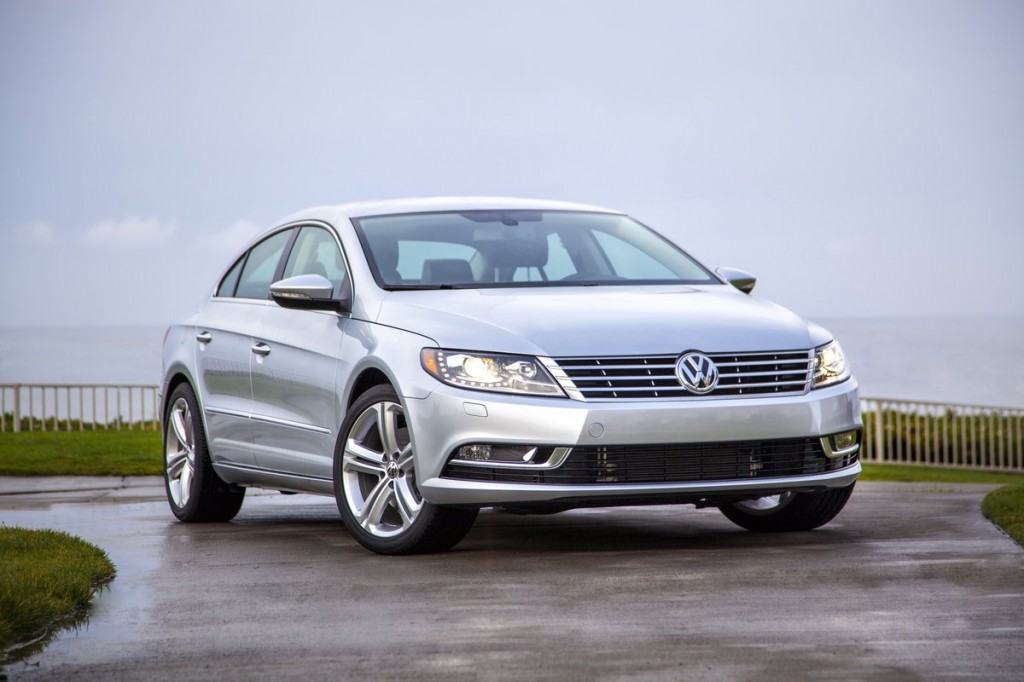








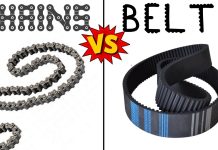



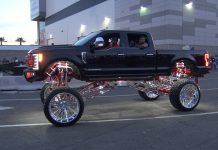
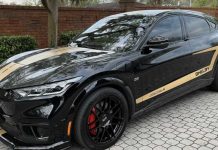
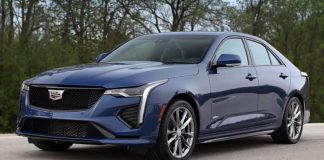
Thank you for this review. Curious about the CC:
1. How is the ‘feel’ of the inside? The minimalism is interesting especially as everyone else is throwing in all sorts of switches and gadgets into the dashboard.
2. How are the stock tires?
3. For you, was there a noticeable difference in the look of the base Sport, and the R-Line? I know it’s just a cosmetic difference but wonder what you thought in person. For example is the R-Line lower?
Hi William,
“Feel” is of course subjective to a very great extent – but VWs, in my opinion have that quintessentially German ambiance (feel) of being no-nonsense, functional, and very tight (well put together). The appearance is clean/minimalist – but not cheap looking. I prefer to this to the often overwrought (if fancy) look/layout of many higher-end car interiors.
Of course, opinions vary – and the only way to really get a sense of it is to go see (and sit in) the car yourself.
The stock tires are . . . ok. For everyday driving, they’re actually a good choice int hat they offer a good balance of wear/traction and ride quality. More sport-oriented tires will really wake the car up, though.
I think the R Line enhancements are worth it. They’re subtle, but they do class up the joint – and give the car a more distinctive appearance. I’m not sure about ride height, though probably models equipped with the more aggressive wheel/tire packages will sit slightly lower overall than the standard car. It’s typically not an immediately noticeable difference, though.
Hope this helps!
This car has been on my to-own/bucket list since it came out. (Maintenance costs still worry me, but…) I do remember, it sure was, and still is, a sexy car. One thing I must complain about, again… Buick’s 2.0L turbo makes 270hp, Hyundai’s makes 274. Best VW can do is 200? Again, Hyundai’s NA 2.4 makes about this, and Honda’s Si and TSX, 2.4, NA, makes 201.
My only explanation for this is that they’re trying to make the VR6’s numbers seem better. This just further illustrates why the TDI should be an option.
Having said all this, I’d love a CC with the 3.6.
Agreed, Brandon. I think you’re spot on with regard to the 2.0 engine. If they amped it up to say 240 or so hp, the 3.6 becomes undesirable. The lighter 2.0 car would probably be as quick – maybe quicker – and would get better mileage, too.
But the real head-scratcher is the absence of the TDI engine from the roster….
Eric said “It’s awkward and uncomfortable – as you strain to turn your body while cinched tight by the also have-to-wear-it-at-all-times seat belt. At worst, it makes driving the car more dangerous than it needs to be. Not VW’s fault – and by no means a problem unique to the CC.”
Funny reading that after my 1/2 hour battle with a new 5 gallon “CARB approved” gas can. Most of that time was spent “upgrading” and venting the can to actually pour gasoline out to my liking. Too bad same can’t be said for their better idea car rules.
Gary,
I have those $%$!! cans, too. They are Satan’s own… Even for a strong man, pouring fuel is an awkward, and usually, spill-full operation. Manipulating those vapor/venting controls while attempting to pour… gawd! The kicker? These 5 gallon plastic jugs that could not have cost more than $1 to make (in China) sell for $20!
@Eric – Happily our Southern friends have a fix on YouTube.
http://www.youtube.com/watch?v=0lcnwdIYEfI
Blitz, the big manufacturer of the plastic gas ‘cans’ made them in the USA.
I didn’t find the price of the 1 gal jug I bought to be unreasonable for what it was given it was made in the USA, the cost of the molds, the operators, doubling for distribution, doubling for retail, and so on.
I’d say on a parts cost basis looking at about $3 (if outside sourced, USA), it retailed for around $10 but I think I paid less. Now the bigger jugs, that’s where the profit is, because the bigger ones only go up for shipping volume and the added plastic is of trivial cost.
Wow. I like that car quite a bit and couldn’t agree more about adding the Diesel engine to the lineup. The Passat is styled like a milk truck and this is a coke bottle.
This car, given a high mileage diesel option might take away sales from the BMW 3 &5 series diesels as well as the Mercedes Benz CLA.
Ditto, Swamp.
Given the widespread (and 50 state) availability of diesel engines across VW’s model lineup – it’s odd that they chose not to offer the TDI in the CC.
Odd – and, frankly, stupid.
A 45 MPG diesel that’s quiet, that performs… is damn near irresistible.
I don’t think too many Accord or Camry buyers will cross shop the CC, or vice versa.This car is for the visually oriented buyer, who values aesthetic appeal above practicality. So the turbo diesel you long for will not happen, because this car is not aimed at those who value high mpg economy or trailer tugging torque.
And the 300+ bhp V-6 I long for won’t happen either. Not because visually oriented buyers don’t like to go fast. I think this would be a better match than would a truck-like diesel engine. But it won’t happen because, to the best of my knowledge, VW doesn’t even build such a motor.
Hi Mike,
I dunno. Audi is doing brisk business with diesels. So also Mercedes and Benz. Mazda is launching a whole line of diesel engines.
It’s a lot easier to justify paying a bit more for a CC with a diesel knowing it will make up for a lot of that in the way of lower down-the-road operating costs. Especially when the diesel-powered unit is not slow. Or noisy. Or anything unpleasant.
And much that is pleasant.
I had an A6 TDI a few weeks back. I’d absolutely buy this version over the gas-engined version. Excellent performance – with superb economy.
The CC is marketed as a lower-cost alternative to the name-brand status cars. I think a diesel engine option dovetails with that concept nicely.
Great review, Eric. Omitting the TDI engine is baffling. But it’s an attractive car, and the turbo 4 doesn’t seem like a bad option.
Thanks, Robert!
I’ve got a query in the que – sent to VW. Maybe they’ll give me an answer about the reasons for the absence of the TDI from the CC’s engine lineup.
Such a shame…